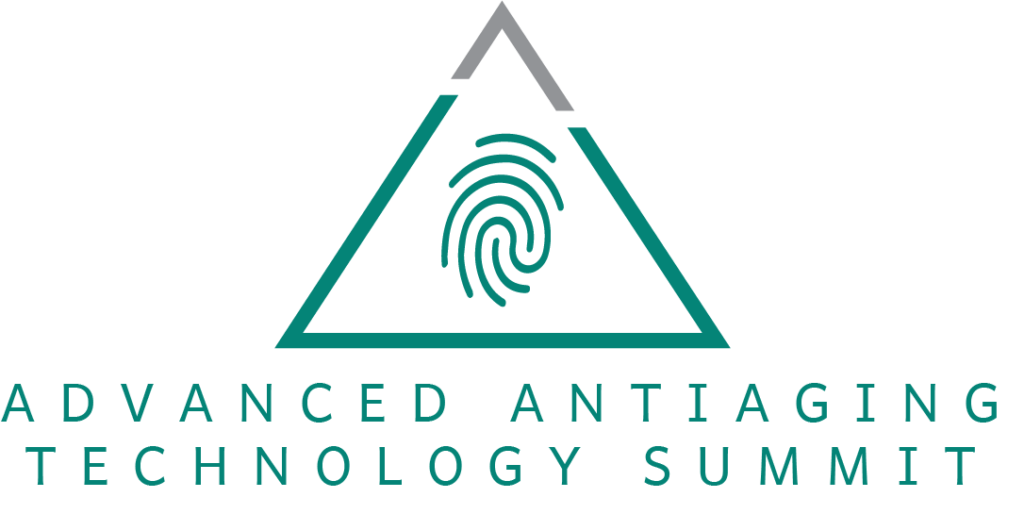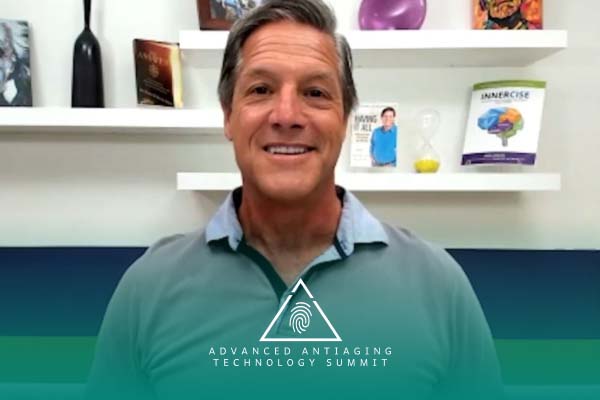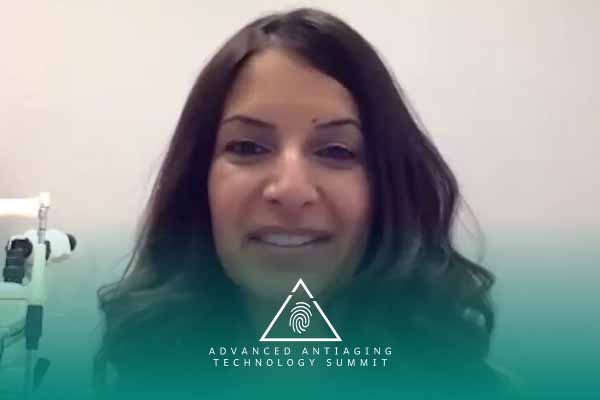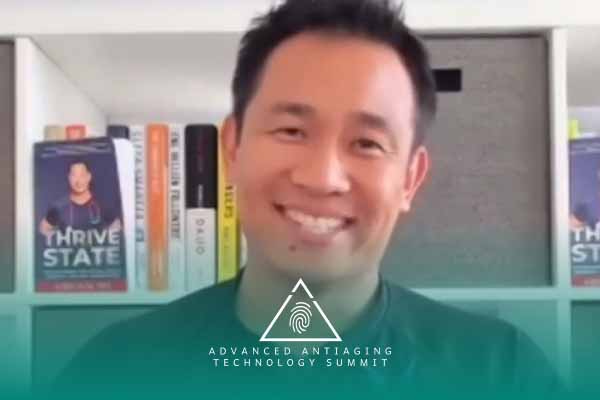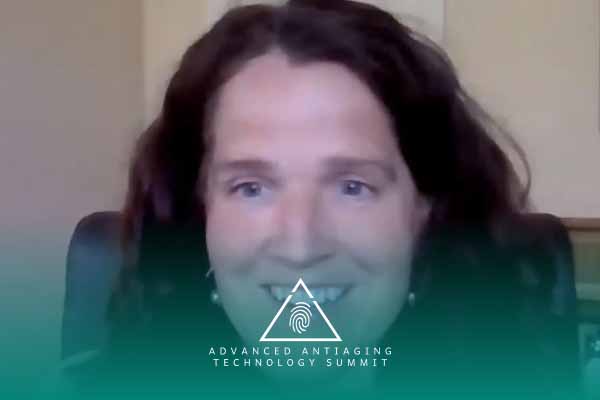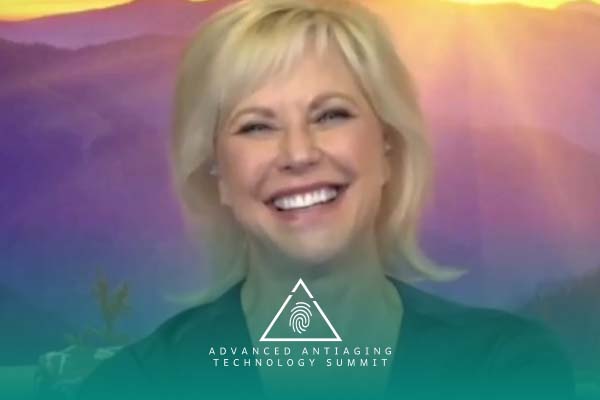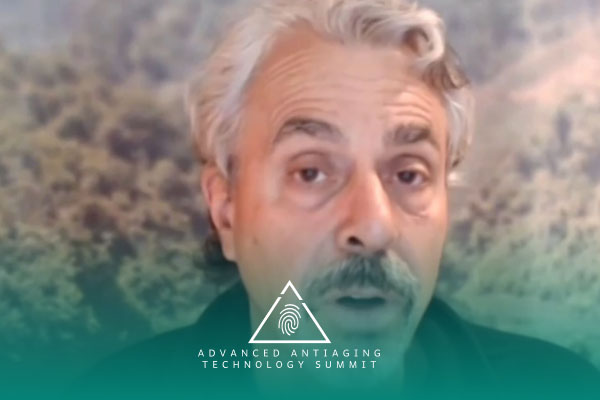Join the discussion below
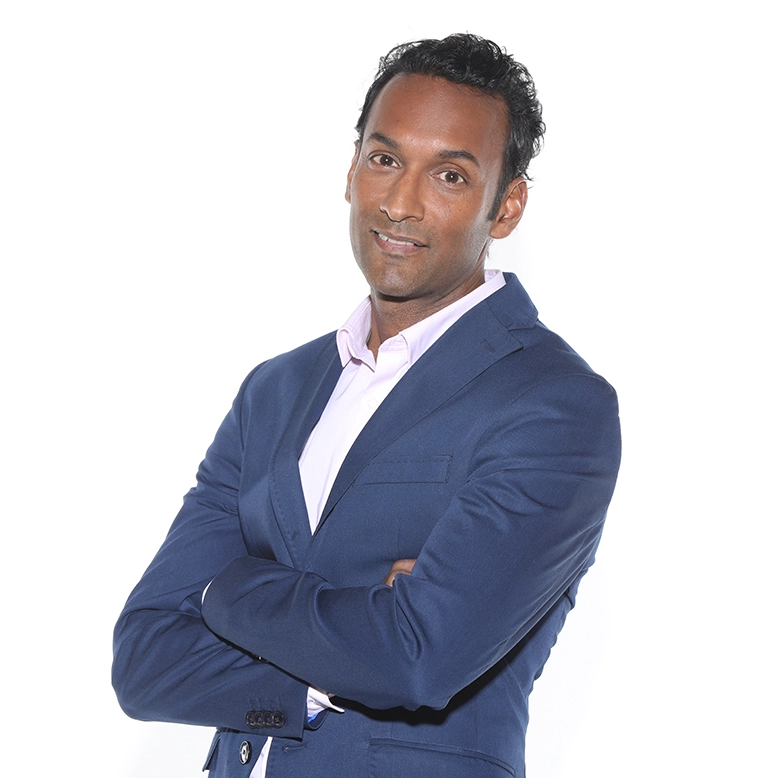
Dr. Goel is a medical physician and founder of Peak Human Labs. His mission is to speak knowledge of the latest cutting edge medical tools and science in order more people to live in a Peak mental, physical and spiritual state. You can learn more about his work at longevity.peakhuman.ca. Read More
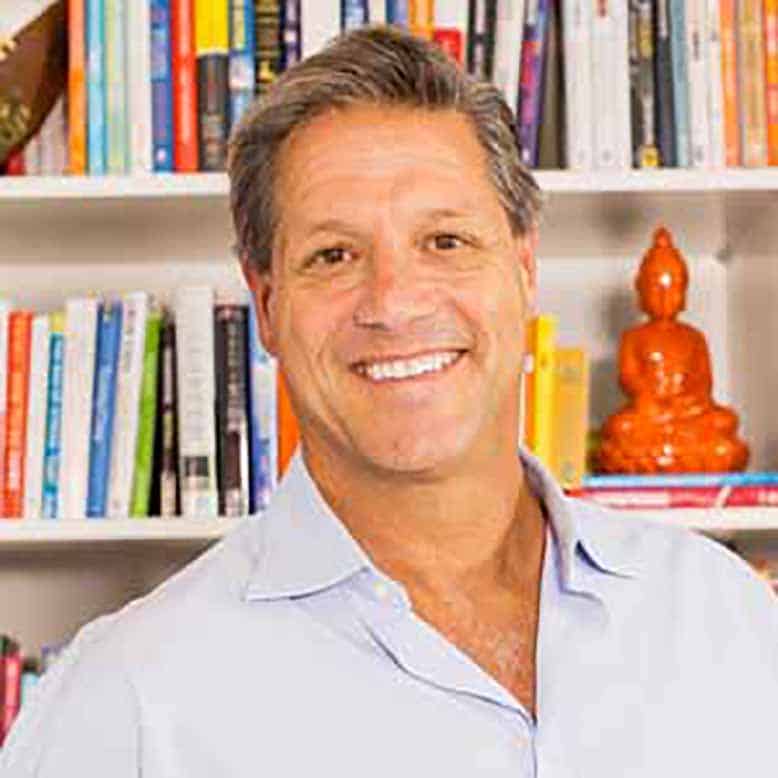
John Assaraf is one of the leading mindset and behavior experts in the world. His latest bestselling book Innercise: The New Science to Unlock Your Brain’s Hidden Power, helps individuals recognize and release the mental and emotional blocks that prevents them from achieving their life’s biggest goals and dreams. John... Read More
The Power of Neuroplasticity: The video emphasizes the incredible capacity of the human brain to change and adapt throughout one’s life. It discusses how neuroplasticity, the brain’s ability to rewire and form new neural connections, enables individuals to break free from limiting beliefs, habits, and patterns.
Mindful Self-Compassion: The video highlights the importance of self-awareness, self-compassion, and setting clear intentions in the process of rewiring the brain. It suggests that individuals should be kind to themselves, acknowledge setbacks without judgment, and cultivate a mindset that supports personal growth.
Building a Support System: To facilitate the journey of rewiring the brain, the video advises seeking a support system. It acknowledges that not everyone in one’s life may be supportive, so it encourages individuals to connect with online communities, like-minded individuals, or programs that offer the necessary support, motivation, and encouragement for personal transformation.
Sanjeev Goel, MD, FCFP (PC), CAFCI
Hi everyone, I’m Dr. Sanjeev Goel and today we’re interviewing John Assaraf. In the last 35 years, John Assaraf has built five multimillion-dollar companies including growing RE/MAX of Indiana to $4.5 billion in annual sales and taking bamboo.com public on the NASDAQ with a market cap of $2.5 billion. John has appeared on many television programs including “Larry King Live” and “Anderson Cooper 360” and was featured in the blockbuster movie and book “The Secret” seen by over half a billion people worldwide and the documentary “Quest for Success” with Sir Richard Branson. He’s also the bestselling author of four books including “New York Times” bestsellers “Having it All” and “The Answer” and “Inner Exercise” Today he is the founder and CEO of NeuroGym. John specializes in helping entrepreneurs and individuals unlock their fullest potential using the most powerful evidence-based brain-training tools and programs in the world. I hope you enjoy today’s talk with him. I’m really excited about this talk. How are you, John?
John Assaraf
I’m doing great, Doctor. How are you?
Sanjeev Goel, MD, FCFP (PC), CAFCI
Good, good. I’d love to just, if you could tell us a little bit about the whole, the brain training part that you’re really an expert in this and how to kind of get the results you want by I guess reprogramming your brain. But I’d love to understand maybe just a background. How did you even get into this? What’s the story behind what got you interested?
John Assaraf
Oh my. Many years ago, about 38 years ago, I was working really hard to try and get ahead in life. I was 22 and I was working, working, working, stressed out. Probably partying too much as a 22-year-old, not eating well, not exercising, and I ended up with severe ulcerative colitis. So I ended up with ulcers in my colon and some people know what that is, but basically what happens is I had inflammation of my colon. And so there wasn’t a lot of room for food to go through or feces to go through. So I had zero bowel control movement. So I might be in a meeting and I’d have this pain in my gut. And then I would literally shit in my pants. And whether I was in a car, in an elevator, in a restaurant, or in bed, I didn’t have enough time to get to the bathroom. And so I had bleeding ulcers. And for two years I was taking these pills.
They were called back then Salazopyrin pills. I was taking 25 pills a day to try and reduce the inflammation. I was doing two cortisol or cortisone enemas morning and night. And then once a month I would go to the hospital to do a sigmoidoscopy, all right. So that’s, I’m giving you some of the discomfort and pain that I was in. And I remember my doctor, he was an internist. His name is Dr. Wu. And he said to me, says, “You know, you’re gonna have to be on these pills probably for the rest of your life.” And then it got so severe that at one point in one of the sigmoidoscopies when they were looking inside the wrong side that they should be looking in, he said to me, he says, “Listen, this is looking really bad. It’s about 30 inches into your colon from your rectum going up and there’s a chance we might have to remove this.” I’m like, what?
Sanjeev Goel, MD, FCFP (PC), CAFCI
Oh wow.
John Assaraf
I’m 22 years old. What do you mean, you’re gonna have to remove this? And so he scared the, you know, no pun intended, but he scared the shit out of me. And so I started to do some research, and this was two years of suffering and pain and being a victim of ulcerative colitis. And somebody asked me a question and the question was, “Well, do you know what’s causing it?” I said, “Well, they said it’s probably stress related.” When I did a lot of research, one of the possibilities was that it was stress related, but another possibility was that it was an autoimmune disorder that was a genetic predisposition that I had. And then somebody said to me, “I want you to watch this show that’s coming up on TV.” And there were a bunch of doctors at the time talking about something called psychoneuroimmunology. Big word, right, for the mind-body connection. And so I started doing more research on the mind-body connection, and I said okay, so let’s say that it’s stress and the stress is activating a genetic predisposition that I have affecting my autoimmune system and it’s showing up as colitis as the effect.
What if I took care of the cause? So I started to eat better. I started to exercise. I started to visualize every single day my colon actually becoming normal and healthy. And I created this affirmation from, this is going back to 1983, okay. My body and all its organs were created by the infinite intelligence in my subconscious mind. It created all the muscles, tissues, bones, and organs, and it has the ability to make me whole and perfect now. Amazing is the creative intelligence within me. I am now perfectly healthy. I’m reciting something to you from 1983. I wrote it out.
Every day I would read it. I recorded it. I would see it and visualize it. Five weeks later, diet, exercise, visualization, emotionalization, and reading this affirmation every day, all symptoms are gone. All symptoms are gone. I took my pills, threw them into the garbage, and I’ve only had one relapse when I was stressed out in 1998, okay, doing a business deal. And as soon as my symptoms came, I realized this is an effect of the stress that’s activating the colitis. And within four or five days, it was gone again. So that was the beginning of me understanding that you know, I have this $100 billion brain, right, a biocomputer, that if I can train it better it can do unbelievable, magical things. And so instead of being a victim of my dis-ease, I became very efficient at managing the effects by focusing on the cause with starting with my self-talk, emotional regulation, focus, and behavior.
Sanjeev Goel, MD, FCFP (PC), CAFCI
So John, you were mentioning these affirmations you did with regards to getting over that ulcerative colitis. Do you think it’s about the affirmations actually changing the programming of your brain or that because you’re doing the affirmations you’re now more aware of making behavior changes and that’s why you’re having these types of benefits?
John Assaraf
So I think it’s a combination, right. The affirmations of themselves, like every word that we use activates neurochemicals in our brains, activates the electrical activity, the neurochemicals in our brain, the neurochemicals in our bloodstream which causes how we feel. So when I am using affirmations like my body and all its organs were created by the infinite intelligence in my subconscious mind, it knows how to heal me, right, I’m not only stating a fact of truth that I now believe, but I am instructing my brain of how to behave and what to focus on.
Instead of focusing on my disease, my dis-ease and how shitty I feel and how it hurts and how it’s affecting my life in a negative way which reinforces that pattern, now I am depending on my own language patterns, my own focus, my own awareness, my own instruction of where to pay my attention. And so they say that energy flows to where attention goes. So if I’m using my energy to pay attention to being healthy, vibrant, energetic, totally healthy instead of the disease, now what happens is I’m actually activating the neurochemicals associated with being healthy. And so whether I’m activating my reward system because I see myself healthy, I feel myself healthy, and in my mind I’m replaying a visualization of being healthy, from a neuroscience and neuropsychology perspective visualization is simulation, right?
And so if I’m simulating in my mind being healthy, now my body has to follow the thoughts and the emotions and what I’m using my brain for. So what happens with a lot of people is they have these preconceived notions or they have these illnesses, dis-eases, and they keep focusing on that and they wonder why is this not going away? Why is this getting worse? And it’s because you keep recreating the very thing you don’t want. And I like to focus on how do I train my brain to focus on what I do want? How do I focus on the outcomes I do want? But then I also have to back it up with behavior, right, because now I’m reinforcing the neural networks around the right thoughts, the right emotions, the right feelings, the right sensations, and the right behavior. So I don’t suggest you just sit there and imagine and hope and pray as your only strategy. We know that for that neuroplasticity switch to activate, challenge is okay, fun is okay, but actually behaving in ways that are consistent with what it is that we want to achieve, that’s really the little piece that cements that neural pathway and reinforces it which creates that default mode of being healthy if that’s what you choose to have.
Sanjeev Goel, MD, FCFP (PC), CAFCI
Do you think that there’s a type? Do you think like somebody who’s gonna be successful in using this type of training, they have to have a certain amount of pre-homework done or they have to be, you know, or something make them more suitable like, you know, so they have better gains?
John Assaraf
Well, there’s a lot of work, for example, around the placebo effect, as you know, right. What’s really interesting with some of the recent placebo studies is, and everybody knows placebo effect is they give half of the people a pill that might reduce inflammation and the other half will get a pill that’s a sugar pill. And just about the same number of people receive the benefits as if they took the real pill. So the inflammation symptoms and markers go down. Now here’s something new that’s recent. Even when somebody knows that they’re taking a placebo pill they still get the benefits of as if they were taking a real pill to reduce let’s say inflammation. And so there’s something that’s happening in our brain that even when we know that something that we are taking is not a real substance based on a scientific FDA-approved drug, okay, in the United States, it still works for us.
So the question is does autosuggestion help anybody? And the answer is it appears to be yes regardless of whether you have a grade school education, high school, university, or PhD, it doesn’t make a difference. When we’re talking about, as I mentioned, the human brain, the brain works the same. So what if I could shift my awareness to a more positive frame, right, from I don’t know how to I’ll learn how, I can’t because it’s hard to I know it’s hard enough and I’ll still do a little bit. Any time we shift language patterns we either put the brakes on or the gas on of our potential. So when we’re talking about retraining our brains, if you think about how did our brains become conditioned? Like when you and I were born, where we born with any beliefs? No. Were you born with a self-image? No. Were you born with any habits? No. Were you born with any fears? No for the most part.
And so we develop these neural patterns or networks that from the early years of imprinting, modeling, and experiential years, we created a map of reality and a map of what we expect. So we expect, you know, back then at 60 or 65 you’re on your way down and you’re aging. I mean, says who? Well, says who is people in the ’60s, ’70s, and ’80s. Well now your sixties and seventies could be like your thirties or forties or fifties. Now, if you don’t believe that, then it’s not true for you and you are gonna behave in alignment with your beliefs, not the truth, but your beliefs that are your truth. And so is it possible since a belief is nothing more than a reinforced neural pattern that we have a lot of evidence for from our parents, our teachers, our experiences, and more than that, the meaning that we constructed during the experiences, is it possible, and this is a question I’ve been asking for 35 years and I know the answer. Is it possible to release disempowering beliefs or negative ones or destructive ones? Well, of course it is. Is it possible to release disempowering habits?
I’ve given up refined sugar. I’ve given up alcohol because I was drinking a bottle of wine a night. I’ve given up so many things that I was either addicted to or were destructive by recalibrating my own brain. At one point I was 243 pounds 12 years ago, 33% body fat, borderline hypertensive, borderline diabetic. I was going downhill and picking up speed into the ground. And I said hold on, stop. I am creating this reality. I’m achieving success in these areas of my life but look at the effect called my body. Let’s change that. So I took a couple of years and I said let’s rewire my self-image. Let’s rewire my habits. Let’s rewire my behaviors. And I just said how do I take the evidence-based methods to activate that neuroplasticity switch to change my self-image, to take the beliefs that I had that may have served me for whatever reason in a period of time of my life and change my beliefs and reinforce a new set of patterns around my beliefs and my behaviors. And I released 45 pounds of fat and I’ve been the healthiest I’ve been in my adult life. And as I mentioned to you before the show, my focus now is a six pack at 60 which is not supposed to be normal.
I didn’t have a six pack at 16. I didn’t have a six pack at 26, 36, 46, or 56. And I just said okay, for my 60th birthday I’m gonna have a six pack at 60. It’s just a few months away and I’ll have that way before then. But regardless of that, our own self-concept is really, really important, and really taking control of the most powerful biocomputer organism which can change is one of the greatest gifts we can have and use and become better operators of our brain.
Sanjeev Goel, MD, FCFP (PC), CAFCI
We’ve taught in medical school and all through our training and all that that beliefs are very fixed. Like they’re very difficult to change. And what you’re saying is pretty revolutionary, that we can actually change these core beliefs like I’m not worthy, I’m not lovable. I mean, we say that these are like very deep ingrained. So you’re saying that through training we can change these core beliefs and then remake our whole life. Is that what I’m hearing?
John Assaraf
That’s what you’re hearing and that’s what all the science has proven. So let me give you a great example. Did you at one point or do many people around the world at one point believe in Santa Claus?
Sanjeev Goel, MD, FCFP (PC), CAFCI
Yes.
John Assaraf
So it’s a belief that we have that we swear is true when we’re kids only later to find out that the evidence shows that that belief was a made-up story that we got introduced to at a very young age if you happen to have Santa Claus in your family culture or societal cultural you lived in. Well that’s a belief structure that had to be replaced with one that that’s a really nice fantasy for children but Santa Claus doesn’t really exist. Well, what if we took a look at what is a belief in our brain? A belief in our brain is nothing more than a neural pattern that’s been reinforced with evidence to support it. That’s right, we just have evidence to support it. Well is it possible that some of that is just wrong? Is it possible some of the evidence we had because of either our parents, our teachers, our own experiences, the meaning we gave things, or maybe the era that we were raised in. Maybe the evidence was wrong.
Maybe it was religious. Maybe it was cultural, I don’t know. But if a belief is nothing more than a reinforced pattern with evidence to support it, can we disengage that pattern and create a new pattern based on the science of neuroplasticity and automaticity? And the answer is yes, our brain is plastic. It’s not hardwired. We used to believe that it was hardwired. We used to believe that we were born with a genetic predisposition and that we were gonna be just like our mother and just like our father. Well, the truth is we become exactly like them or exactly opposite of them based on our choices, not our genetic predisposition. So epigenetics, right, is actually more powerful than our actual DNA and our genetic predispositions. So even though, for example, I had a genetic predisposition, which I had found out, for ulcerative colitis, it was activated, okay.
My autoimmune predisposition for ulcerative colitis was activated by stress and my lifestyle. And as soon as I changed the inner game and the outer game, oh my god, the autoimmune disorder basically quieted down, right. So we have more control than we think we have. We are not hardwired. Our brain is moldable, pliable. We can deactivate neural patterns that don’t serve us and disempower us and we can deliberately and consciously evolve ourselves. That’s the work that I do and that’s the power that we all have. And we’re just really starting to understand how powerful we really are, not from an egotistical perspective. From just a humble, holy shit perspective. I’ve got this $100 billion brain. I just need to become a better operator.
Sanjeev Goel, MD, FCFP (PC), CAFCI
Somebody might say, you know what? John is this very special human being. He’s got above average determination and perseverance and all that, but that’s not me. I don’t have that type of capability. How would you respond to that? How would you respond to somebody who feels that way? Can they still have the same type of success-
John Assaraf
That’s a belief structure,
Sanjeev Goel, MD, FCFP (PC), CAFCI
And have you seen it?
John Assaraf
So that’s something that you believe. So I would ask somebody who believed that, I said is it easy to learn how to walk? Have you ever seen any of the robotic companies that are trying to teach robots how to walk and how difficult it is to walk just across a room? It’s very hard to learn how to walk but you learned how to do it. So you’re pretty resilient. Do you know how easy or hard it is to just pick up a pen and start writing? Well, you learned how to do that. Do you know how hard it is to be balanced on a bike and not fall off for a robot that we can spend $100 billion for? Well, you know how to do that. Do you know how hard it is to learn a language or two or three, or to eat with your right hand or left hand, or to do math easily? You’re a lot more resilient and a lot more capable than you may be giving yourself credit for it.
So my question for those peoples who would think that I’m different than you, I would say show me some evidence of when you were able to do something that you thought may be harder than you initially thought. Show me some evidence of learning a language, math, biology, knitting, checkers, chess, riding a bike. Show me some evidence where you displayed that you can achieve more than maybe you thought you could at the time. And here’s the other question. When people want to compare themselves to somebody else, they’re usually comparing themselves to somebody else who’s achieved something that’s taken them years to achieve versus in the last 24 hours , right. And then how we suggest is imagine if we decided to jog a marathon a year from now. And imagine that you don’t know how to jog a marathon. You don’t have the cardiovascular capacity. You don’t have the training. You don’t have the right diet. You don’t have the right mindset. You don’t have the right emotional control. You don’t know what to do.
But imagine if you said I’m committed to running a marathon slowly a year from now. And then you said okay, what would my diet need to be like? What would I need to do today as far as exercise? Could I maybe walk for two minutes, three minutes, five minutes? How many days a week should I run? How much rest should I get? What kind of food should I eat? How much sleep should I get? What kind of coaching and training can I get if I was committed to jogging marathon a year from now? Now almost everybody I’ve asked all over the world who answers honestly says if I committed to jogging a marathon a year from now, I could do it if I started slowly today with just a little bit.
So let’s not compare whether you can run a marathon from now because I might be able to. Let’s ask could you do something for one minute today that would make you healthier? Maybe one minute of positive whether it’s affirmations, declarations, promises, whatever you want. Maybe it’s one minute of feeling good so I could release the feel-good neurochemicals. Maybe it’s one minute of taking action towards what I want and not using stories, reasons, or excuses of why I can’t. Maybe just one minute. Could I build a muscle by doing a little bit of exercise every day? Of course. Well, could I not also build my neural muscles by doing the same thing?
Sanjeev Goel, MD, FCFP (PC), CAFCI
Mm-hmm, no, exactly-
John Assaraf
That’s where, you know, my newest book “Innercise: The New Science to Unlock Your Brain’s Hidden Power” is Jack LaLanne back in the ’60s and ’70s popularized exercise to strengthen your muscles and your internal organs. Well, I’ve been doing meditation and mindfulness and visualization and affirmations and a host of other innercises for 40 years and I know what they’ve done in my life. And so not only has it done miracles in my life but I have taught millions of students around the world on how to retrain their own brain so they are empowered, they have focus, they have energy.
They’re aware of how powerful they really are versus how disempowered they may feel and helping them understand that beliefs are nothing more than the lens by which you see the world. And then you distort and delete everything else that doesn’t match your belief structure. Now we start to say hmm, maybe I can change. Maybe I can be healthier. Maybe I can have more energy. Maybe I can reverse the aging process and be healthier, more vibrant, more energetic as I get older instead of this old belief and paradigm system that I have to wither away and die in a chair or I don’t buy into that. My whole structure of what I believe is possible into your sixties, seventies, eighties, nineties, and hundreds is not predicated on what the masses think and do. It’s based on what the few have already shown us we can do and are capable of.
Sanjeev Goel, MD, FCFP (PC), CAFCI
Mm-hmm, do you think that, I mean, you have spent basically, you know, you said 30 years or so developing this and learning these techniques. And now looks as though it’s, I mean, one could, one. If one tries to do this on their own they’re gonna have to go through all the trial and error and all this. I mean, the real beauty here is that you basically created this and they don’t have to go and relearn and figure all these little tech, this training out. I think that’s the real, it’s like working with a special athlete or coach who’s like, you know, who’s an expert in this field because you’ve done this for so long.
John Assaraf
Yeah, I happen to love the research. I happen to love being my own Guinea pig to see what works and what doesn’t. But then I’ve had hundreds of thousands of clients that have released their fears of failure, fears of being embarrassed and shamed, ridiculed, judged, rejected, fears of not being good enough, smart enough, or worthy enough, eliminate procrastinating, eliminate self-sabotaging behavior, relinquish destructive habits that was gonna kill them too early and move them into a state of despair. So not only has it worked for me and my wife and children and friends and family but I started teaching it to my own students. Like I’m an entrepreneur. I didn’t set out to do this. I just wanted to be a high-performing human being myself to fulfill as much of my potential as I could. I went to grade 11 in high school.
Didn’t do well in school. I thought I wasn’t smart enough or good enough. And some people stepped up and said, “Oh no, no, you don’t know how powerful you really are.” And again, I don’t say powerful in a sense of ego. Powerful in a sense of you have this amazing brain that if you just used it better you can actually achieve more than you ever thought possible. And so that’s when I started to write books that became “New York Times” bestselling books and creating brain training programs to help people lose weight and keep it off. We know how to lose weight and keep it off but we also know why people gain weight, lose weight, gain weight, lose weight, gain weight, lose weight. We know that it’s a combination of triggers and self-image and habits and behaviors and hormones. And we know what is the cause of this yo-yo diet syndrome. But our television ads are all about this quick fix that you can lose weight this weekend and you’re gonna gain it back next weekend.
So nobody’s talking about the truth of what is really happening inside the conscious or subconscious mind and the network and the circuits in our brain. Our brain is a network or three major networks, salience, executive, and default mode network and a variety of circuits that turn on or off. And if we don’t know how our brain works and what turns on these networks or circuits, that means we’re ignorant. Not incapable, we’re ignorant which just means I don’t know. Well, I want to let people know. Now you can say I know when I’m choosing not to do it, but most people don’t know that they can deliberately and consciously evolve themselves and change from the inside out and from the outside in. So all the work that I do is work with world-leading neuroscientists and neuropsychologists and experts, apply what I learn in my own life, teach it to my students and my family so that I can help them achieve their goals and dreams faster and easier than ever before.
Sanjeev Goel, MD, FCFP (PC), CAFCI
This sounds like it’s something that is once you take this up it becomes a lifelong endeavor. It’s not some, and with ongoing and I guess gains and changes in your life. It’s not something you’re saying like a quick fix. This is you commit to something. You’re committing to like a whole way of re-developing your brain, reprogramming.
John Assaraf
Yeah, like I don’t believe in people who want to lose weight. You’re either gonna wanna lose weight, for example, for a reason, a season, or a lifetime. If you want to lose weight for a reason, just fast and don’t eat a lot. You’ll lose weight. If you want to lose weight for a season like bikini season or because you want to have pictures taken at a family reunion which is a reason, maybe even a season, that’s great. But if you want to get healthy and stay healthy, there’s a way of thinking, there’s an emotional regulation side of it, and there’s a way of behaving that gets you healthy. And so if you’re gonna do the work, why not do the work to, for example, get in shape and then stay in shape, like, right.
So just like, you know, once you start exercising you feel good, you have energy, you’re sleeping better, and your sex life is better and you’re looking and feeling better than you have in years, why stop that? Why stop all the stuff that feels great? And that means you have to understand the science of habits, right. So there’s the science of behavior, but there’s also the science of habits. And I can stop in a minute. I can say I’m not gonna have that pizza at lunch.
I’m gonna have a salad with maybe two tablespoons of olive oil. But then if you’re eating three slices of pizza tonight with cheese and bacon and all that stuff, then, okay, you’re not gonna be able to have that healthy lifestyle. You might have a healthy lunch , but not a lifestyle. So everything starts off not just what feels good for the moment, but what behaviors, what thoughts, what emotions can I evoke now so that not only I feel good now, but that I build these constructive, empowering habits and a way of being that I can maintain so that as I get older I actually am reinforcing constructive, empowering, positive patterns versus destructive, disempowering, negative patterns, right? So the difference between you and me and a horse and a pig, we have choice. We can choose. Now, is it possible
Sanjeev Goel, MD, FCFP (PC), CAFCI
Right.
John Assaraf
Is it possible we just keep choosing the same things that aren’t gonna be to our benefit over and over and over again because our brain conserves energy and is predicting the present and the future based on its past patterns? Yes, that means I need to learn how to interrupt those negative patterns, replace them with positive patterns, and it takes between 66 days and 365 days to create a new pattern that overrides the old pattern. So for everybody who’s serious about this, don’t think you’re gonna go on a diet for three weeks, lose the weight, and keep it off. You won’t, you’re gonna revert back to all your old behaviors, so don’t even start to diet unless you have a reason to do it like a wedding or a bar mitzvah or something. If you want permanent change, get used to recreating a neural pattern around your self-image, your beliefs, and your habits, and be prepared to invest 66 days to 365 days to create a new positive, constructive pattern. And then that pattern, if you develop the right habit, the habit will then develop you. Anything less than that, people are smoking crack and thinking they’re delusional. They’re using the drug of choice which I call is hopium.
Sanjeev Goel, MD, FCFP (PC), CAFCI
Right , so then, so, and what about, I mean, someone’s, let’s say that they begin down this road, say look, I’m willing to invest 90 days let’s say and they have some setbacks.
John Assaraf
Perfect.
Sanjeev Goel, MD, FCFP (PC), CAFCI
Do you see that people, what type of, you know, is it always a smooth ride or you’re seeing people are having some setbacks and fall down and get back up and that’s very normal?
John Assaraf
Let me share with you what I teach every one of my students. I’m just gonna use a running example, okay. I don’t do any running anymore, but let’s say you were to start running and I said to you hey, Dr. Sanjeev, chances are you’re gonna be sore and you might need to take a day or two off and some days you’re not going to feel like it. On the days that you’re sore, here’s what I want you to do. On the days you don’t feel like it, here’s what I want you to do. On the days that you just don’t do it at all, here’s how you bounce back. What if I could pre-frame what you are going to feel and experience and then teach you a behavior of what to do? So then when let’s say you’re on a diet and then let’s say you just gorged yourself, okay, With cake and cookies and pizza and all that stuff. You can go into a negative spiral saying ah shit, I just messed up my diet.
I can’t do this. This is hard. Or what if I said to you that’s what you’re gonna wanna do, but here’s what I want you to do. If and when that happens, and it’s likely that it will sometime along the way because your brain does not like change, okay, the more you feel the resistance and the more that that happens, here are some techniques to counter the negative self-talk. Here are some techniques to counter the negative emotions that are gonna wanna keep you stuck in your old patterns. I’ll give you the techniques in advance so you can use them. And so once you have the techniques, now you are better equipped to deal with the setbacks. Every single person, I don’t care if you’re an athlete, an astronaut, a Navy SEAL, a firefighter, a homemaker, an engineer, a lawyer, a doctor, you’re a human first.
Sanjeev Goel, MD, FCFP (PC), CAFCI
Yes, and how important-
John Assaraf
And that means
Sanjeev Goel, MD, FCFP (PC), CAFCI
Yeah, go ahead, sorry, yeah.
John Assaraf
And that means that we have to practice awareness, mindfulness, we have to practice self-compassion in addition to our commitment, and we have to learn how to surrender, allow, and accept. Those are skills. Surrender to what is, accept it. No blame, no shame, no guilt, no justification. Just awareness and now a choice. In my book “Innercise” I was telling you about, one of the things that we teach people how to do, there’s an innercise called take six, calm the circuits. And then the next one is called AiA which stands for Awareness Intention Action. So in these moments when we are disempowered, when we want to blame ourselves, when we feel ashamed, when we feel self-doubt, when we feel uncertain, we feel down, what if after you did the innercise one take six, calm the circuits which is a way to recalibrate the stress and anxiety center in your brain so that you’re actually using your thinking brain, not your reactive brain, you did an exercise with a small sheet of paper that you can just say, okay, what am I thinking right now?
What am I feeling right now? What am I sensing right now? Now, what are the behaviors that I want to take on right now as a result of maybe getting off my diet? Write it out. Now in this state of awareness what if you could do that without judging yourself, blaming, shaming, feeling guilty, or justifying? What if in a state of awareness you can just go hmm, wow, that’s interesting what my brain is doing, how I’m feeling.
And what if I can say choose one intention for the next 15 minutes? So the A is awareness. The I is intention. And so if the intention is to let it go, be compassionate, be kind to yourself, surrender, this is part of the process, and then in the intention I said to you what’s one action step you can take for the next 15 minutes to move towards that vision or goal that you have? What if the action was I’m going to walk for five minutes. I’m actually gonna go and have a healthy piece of fruit or I’m going to have a glass of water with lemon in it? What if I now was aware of what I didn’t want or like? What if I set the intention? Now I deliberately took one, one small little action towards what I want.
Now what have I done? Now, instead of reinforcing a pattern I don’t want, I became aware of it, I surrendered to it, I set an intention, then I took a pattern action step towards what I do want. Now who’s in control? Now who’s responding instead of reacting? Now who’s deliberately and consciously evolving themselves? You, that empowers you versus disempower. But in the absence of skill, this is really important, the absence of skill, the skill of awareness, okay, the skill of what should I do, the skill’s how do I flip the emotional switch from this to that? In the absence of skill we all default to our highest level of training under stress. We all default to our highest, yeah.
Sanjeev Goel, MD, FCFP (PC), CAFCI
I understand that, okay. So what about, I mean, many people will say look, I will do, you know, I need, you know, my close people around me are perhaps not supportive or they’re not buying into this. How important are the support structures and how do you bring them on? How do you help your client to bring them on board and onto helping them through this type of journey?
John Assaraf
Sure, so there are some people that their spouse is not supportive of them. There’s some people that their brothers or sisters or mothers or fathers or friends are not supportive of them. I get that. And so the first thing you do is you don’t ask them for support if you know they’re not supportive of you because they will push you down instead of lift you up. Now, there’s something called the Internet and the Internet has got millions of groups that support each other. Some not paid, some paid.
For example, in my company, every person who buys any of our programs, we put them into a community of people that are going through those programs. So when there’s resistance, they lift each other up and they pull each other up or they nudge each other. When there’s opportunities, they share it with each other. When there’s successes, they share. When there’s failures which just means something that they tried didn’t work, it doesn’t mean they’re a failure, everybody’s there doing it together. So now we have a support group. And it’s like I said. There’s paid groups or non-paid groups online that you can get the support that you need. So in the absence of your own resources you must become resourceful.
Sanjeev Goel, MD, FCFP (PC), CAFCI
That’s powerful, yes.
John Assaraf
Right?
Sanjeev Goel, MD, FCFP (PC), CAFCI
Yep. So where could our listeners go and viewers go for more? Like I know you mentioned the program. Can you just tell them a little bit? Where should they go?
John Assaraf
Sure, I mean, the easiest place to go is myneurogym.com. So that’s M-Y N-E-U-R-O-G-Y-M.com. And then people can follow me on Instagram, on my Facebook fan page, on Twitter, on YouTube. I’ve got lots of free content that people can consume. They can type in my name, John Assaraf, which I’m sure you’ll have on the show. They can pick up my newest bestselling book called “Innercise: The New Science to Unlock Your Brain’s Hidden Power.” I’ve got another “New York Times” bestseller called “Having it All.” Another “New York Times” bestseller for business owner called “The Answer.” So I’ve got a variety of different places that people can find me and follow my work and make their lives better and achieve their goals faster and easier.
Sanjeev Goel, MD, FCFP (PC), CAFCI
Thank you so much. I’m actually gonna become, I’m gonna sign myself up for you. Such a mind-blowing talk today. I really appreciate your time today.
John Assaraf
Thanks Dr. Sanjeev, I appreciate you. Thanks for giving me the opportunity to share and to give people a little expanded awareness of what’s possible for them.
Downloads
